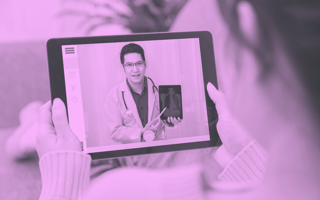As a surgeon of nearly 25 years, I’ve been on the front lines as a witness to all the barriers in place between patients and doctors. The system has long relied on a convoluted process that revolved around strict insurance regulations. As a result, patients often put off seeing the right doctor or give up when it comes to getting the help they really need.
There’s ongoing frustration across the medical field over this antiquated method of giving and receiving quality healthcare. There’s an elephant in the exam room: the seemingly endless insurance requirements that act as a barrier preventing patients from gaining control over their care. It’s time to flip the model on its head and re-evaluate the way we see our doctors, putting technology at the forefront.
Accessibility: Healthcare’s Biggest Hurdle
Why shouldn’t the process of seeing a doctor be made simpler with today’s technology? I’m a firm believer that the patient has a right to choose. No employer, network or insurance should determine who, when or how patients access the care they need. Everything else in life has become accessible with the click of a button or a swipe on a phone — so why can’t the act of going to the doctor be just as convenient?
When it comes to seeking advice from online communities, research indicates that 54 percent of patients are comfortable finding the right doctor digitally. This matters because it shows that there is a meaningful number of people that perceive technology to be beneficial for the exchange of relevant information, even about their health. If the right digital community is curated and of high quality, then it’s a useful way to expedite the process of getting in front of the right doctor.
Creating an access point directly with a certified doctor can eliminate the aggravation of long delays, referral waits, pre-approvals and surprise bills with zero itemization — which can save patients time and energy to get the care they need.
It’s no longer serving us to abide by old processes. This paradigm has been blurred by the lack of transparency leading insurance companies to dominate the system without question. The right technology, working as the pipeline between doctors and patients, can function as a digital doctor’s office. The latest healthtech innovations have the potential to trim the fat from traditional healthcare. Skyrocketing costs, unbearable wait times and limited access to insurance and healthcare physicians are starting to be addressed through tech-infused care.
Regaining Patient Sovereignty
As practicing physicians, we love what we do because it’s a calling, not a job. Our mission is to help the patient, not the middleman. The patient has the right to choose what is best for them or their family — not what is best for their network, insurer, or employer.
As a business model, the current system also falls short. Patients have to take several steps to get the care they need. If someone twists an ankle, for example, they might go to a walk-in clinic and get referred to their primary-care physician. They’re then sent for X-rays and directed back to their primary, where they finally get a referral to an orthopedic doctor. Each step is costly in terms of time and money, not to mention pain or anxiety from delayed treatment. The multiple steps and encounters benefit no one, least of all the patient. Add in a global pandemic and every extra waiting room becomes another potential for exposure.
With the right technology, healthcare becomes more transparent and accessible. Patients can choose what is convenient for them as long as the price is affordable. Patients would find:
- Priority access: Appointment slots readily available.
- Quality care: Board-certified specialist interaction with the ease of a walk-in clinic.
- Ease of use: 24/7 utility to make an appointment with a few clicks.
- No restrictions: See the doctor you want to see without worrying about referral restrictions or who’s in-network.
- No geographical limits: Digital technology is fluid and allows for access to doctors you love but may not be “allowed” to see.
- Affordable: No preliminary appointments with PCPs leading to unwarranted charges on the path to being seen by the right specialist.
- No surprises: One transparent and affordable price without any follow-up bills.
Technology Helps Transparency
With this new delivery of healthcare by way of telehealth and digital healthcare, technology is redefining the doctor-patient relationship. Through a direct-pay model, the physician is free to care for the patient without the constraints of insurance requirements. A doctor is no longer out of network, there are no delays waiting for referrals or preapprovals, no waiting on hold and, most importantly, no surprise bills.
This type of technology is designed with the end users in mind: the patient and the doctor. It’s easy for patients to search for an available appointment and doctors don’t have to alter their current workflow to accommodate a new patient. With a simple web app that connects patients to specialists for a transparent price, we can do the unthinkable and increase access while decreasing the cost.
Digital healthcare has everything to do with where medicine is going, not where it’s been. Having affordable options and a transparent price to choose from is important, and through the right technology, it stands the chance to remodel the system. Today’s digital revolution can remove unnecessary and expensive steps while streamlining care so doctors can focus only on their patient’s needs. This type of technology will provide a much-needed jolt of efficiency by simplifying the process to see a doctor and returning the control of individual care back where it belongs: in the patient’s hands.





